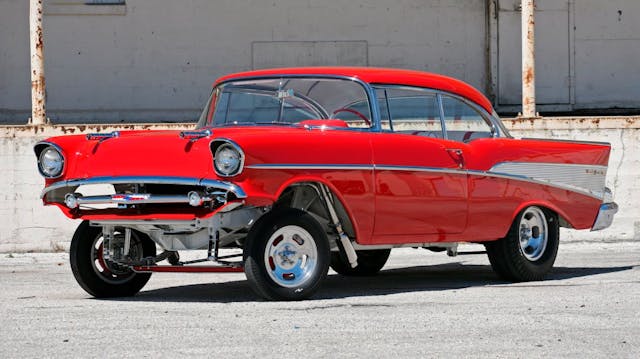Modified Monsters: 6 beauties up for grabs this January
With the action afoot at Mecum’s Kissimmee sale, the annual January auctions are already underway. With thousands of cars to choose from, there promises to be something for everyone. Rare and obscure muscle cars always find an audience at these events, but there are also tons of modified and custom cars to choose from.
Since the beginning of car culture, people have been trying to coax as much performance out of their vehicles as possible. As time progressed, the nature of modifications have evolved both according to technology and enthusiast taste. For a sample of the flavor variety out there, let’s take a look at six modified and hot rod machines up for auction this month.
1932 Ford Roadster

Few vehicles embody the golden age of hot rodding like the 1932 Ford. Over the years they’ve been featured in countless movies, magazine articles and the subject of the famous Beach Boys song which has catapulted the car to stardom. Enter the ’32 Ford offered by Barrett-Jackson in Scottsdale this month. This is one of those cars that has done it all and seen it all. The car was built during the golden age of hot rodding by Sam Conrad, who was a founding member of the L.A. Roadsters car club. The build was featured in countless articles by the likes of Hot Rod, Motor Trend, and Road & Track. These articles detailed the build, which acted as a blueprint for the DIY hot rodder. It was also featured in a promo shoot with the Beach Boys in 1963 in front of Capital Records and was later featured as an extra car in the film Hot Rods to Hell.
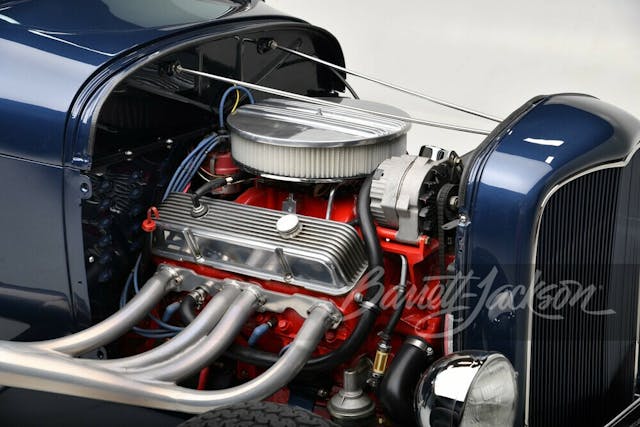
Today the car appears much like it did in the early ’60s. The main difference is that the Oldsmobile Rocket V-8 with multi-carb induction is long gone, and a small-block Chevrolet sits in its place with a single four-barrel carb. While the Chevy engine is certainly period-appropriate, Flathead Ford, Oldsmobile, and Cadillac power were staples of the time period. This is a wonderful example of the cars to come out of the golden age of hot rodding and made all the more interesting for its role as a blueprint for many contemporary DIY builds.
1972 DeTomaso Pantera

If you went to the 2013 SEMA show, if you hadn’t heard of the Ringbrothers shop, you did by the time you left. The outfit’s build nicknamed “Adrnln”, was a 1971 DeTomaso Pantera that took home Best in Show honors and captured headlines in automotive publications for weeks after. It is certainly one of their more famous builds next to Ringbros’ 2017 SEMA entry, “Defiant!”—the Hellcat-powered 1972 AMC Javelin.

A Pantera is a very unorthodox choice for a full-on custom build, even though modified Panteras are pretty common. The standard 351 Cleveland engine responds well to upgrades, but that was tossed aside in favor of an LS3 making 600 horses. Nothing on the car, inside nor out, was left untouched. A unique two-tone interior renderes the whole driver side upholstered in black and the passenger side in yellow. Much of the body was re-molded and shaped, and the engine bay has a clean and minimalistic look bringing attention to the LS3 and polished exhaust system. Adrnln remains as wild of a custom today as it was when it was unveiled nine years ago, and it’s without a doubt one of the most memorable builds in recent memory.
1957 Chevrolet Bel Air Gasser

In the late 1950s, the gasser burst onto the drag racing scene. These wild machines were normal passenger cars stripped down and given a beam type front axle and leaf springs raising the car in an aggressive reverse rake. The idea being that the high front would better transfer weight to the rear wheels upon launch at the track. This would be a popular style of race car through the early 1960s but would stick around though the early ’70s until Pro Stock took a hold in drag racing. While there is a passionate group of racers who still campaign gassers at nostalgia events, builds are few and far between.
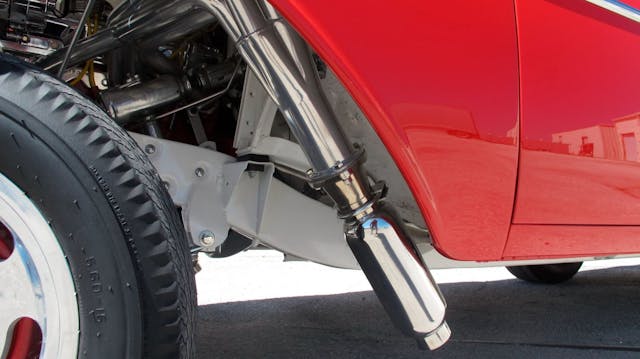
The 1957 Bel Air offered at Mecum is more intended as a show car than a race car. but that makes it no less cool. A 283-cu-in V-8 would not be competitive at the track, but the Comp Cams Big Mutha Thumper cam its packing with ought to give it the idle of a tweaked-out race car. Most interesting is the contrast of the red paint with the white chassis peeking out from under the front, which is usually obscured by a front bumper. For someone looking for the gasser experience without the discomfort of an actual race car, this car ticks all the right boxes.
1961 Chevrolet Impala “Double Bubble”

Autorama is one of the most prestigious custom auto shows around, with owners and builders pouring countless hours and dollars to create a masterpiece in hopes of taking home the coveted Ridler Award. Case in point: this highly customized Impala with a unique roof line completely fabricated as a nod to the Chevy Nomad station wagon. This custom build ran the owner a whopping $1.5 million to build, but that effort was rewarded in the form of the Ridler Award back in 2016.
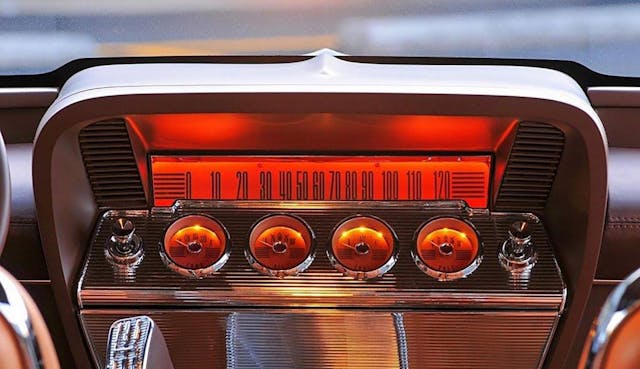
Under the hood resides a 473-cu-in big-block engine based on the architecture of the 409. It’s topped by a set of eight injection stacks and sits in a smoothed and shaved engine bay. The car sits on a custom Art Morrison chassis, which was painted to match the color of the car and has a polished stainless exhaust tucked underneath. The attention to detail on the interior is simply astonishing. The speedometer has been moved to the center of the dash and gives the appearance of a classic radio. The build is truly majestic, one that would need to be seen in person to be truly appreciated.
1932 Ford Pickup

Love them or hate them, the patina look has garnered quite a following over the years. The idea flies in the face of the expectation that all custom or modified builds should be clean, fully restored and no expense spared. This is a world where patina, weathering and use of repurposed materials the better. In a way, a well-built hot rod with patina is closer to the original concept of the hot rod than many being produced today. Hear me out with this: In its infancy, hot rodding was about making an old, unwanted vehicle go as fast as possible using as little money as possible. Somewhere in the subsequent decades the concept got lost amongst high-dollar builds for shows like Autorama, AMBR, and SEMA.

This ’32 Ford has just the right amount of patina and has been done up as a race car hauler, complete with race car and faded advertising. The drivetrain is a tried and true small-block Chevy and TH350 automatic transmission. While not renowned for its power, the 305 offers far more power than anything available in 1932. The rear axle has been upgraded to a Ford 9-inch and coilover suspension. The entire truck has been touched as little as possible, however a new wood bed has been installed and blanket upholstery used on the seat. The tow behind race car is non-running and intended as a display, but it completes the look. Patina might not be everyone’s cup of tea, but if it is, this truck really stands out as a tastefully done machine.
1994 Nissan Skyline GT-R
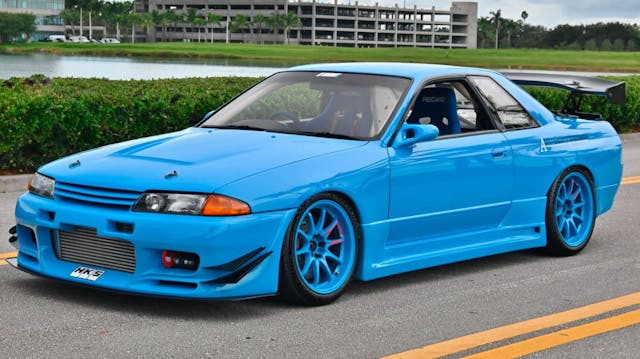
Japanese cars are a newcomer to mainstream modifieds. In a way they still have trouble shaking off the image of auto salon show cars The Fast and the Furious movies. The hobby has long moved on from that style and we are starting to see some truly detailed builds become more popular in the U.S. While Japanese cars are by no means a large percentage of the modified cars in the country, the genre is gathering steam with enthusiasts, especially in the Gen-X and younger crowds. We are also starting to see builds by respected garages in Japan, like the legendary Top Secret, make their way into the country.

This R32 GT-R was built as a demonstration by Auto Gallery Yokohama, a garage in Yokohama, Japan. Built for street and time attack racing, the car boasts a stroked 2.7-liter RB26DETT engine making a respectable 550-horsepower on pump gas. The suspension has been upgraded with a set of Blitz adjustable coilovers and Cusco strut braces to enhance cornering. Exterior modifications include a carbon hood, Voltex GT rear spoiler and the addition of front splitter and canards. The most notable feature has to be this car’s paint. The choice of blue is reminiscent of Champion Blue on the R33 LM Limited but lighter. A car like this at a Mecum auction is without a doubt a fish out of water among the usual array of muscle cars, but it does demonstrate how the Japanese market is edging into the mainstream.
